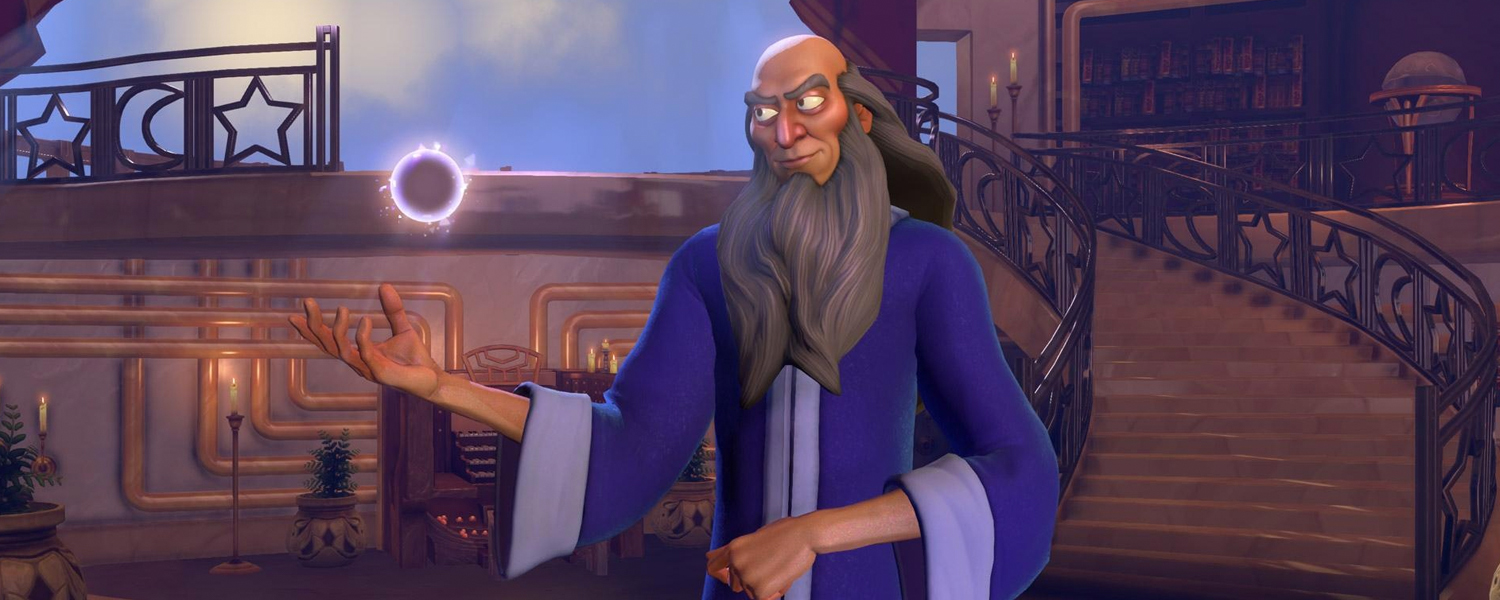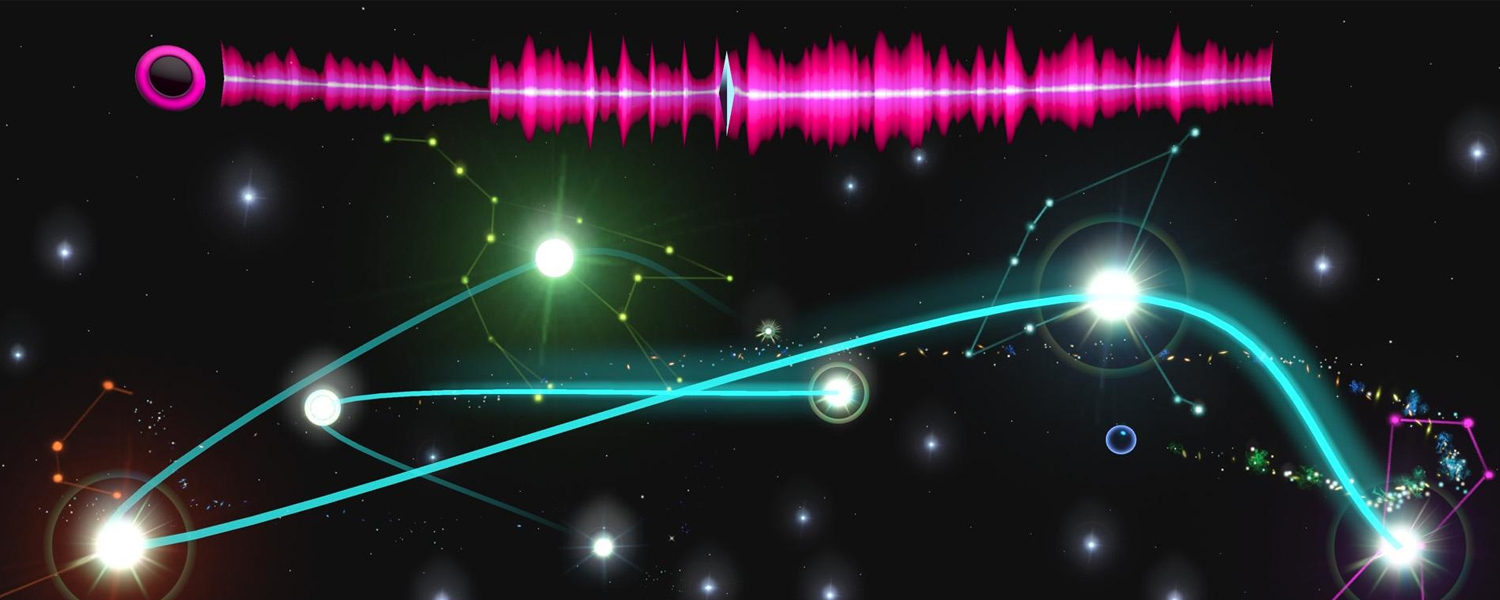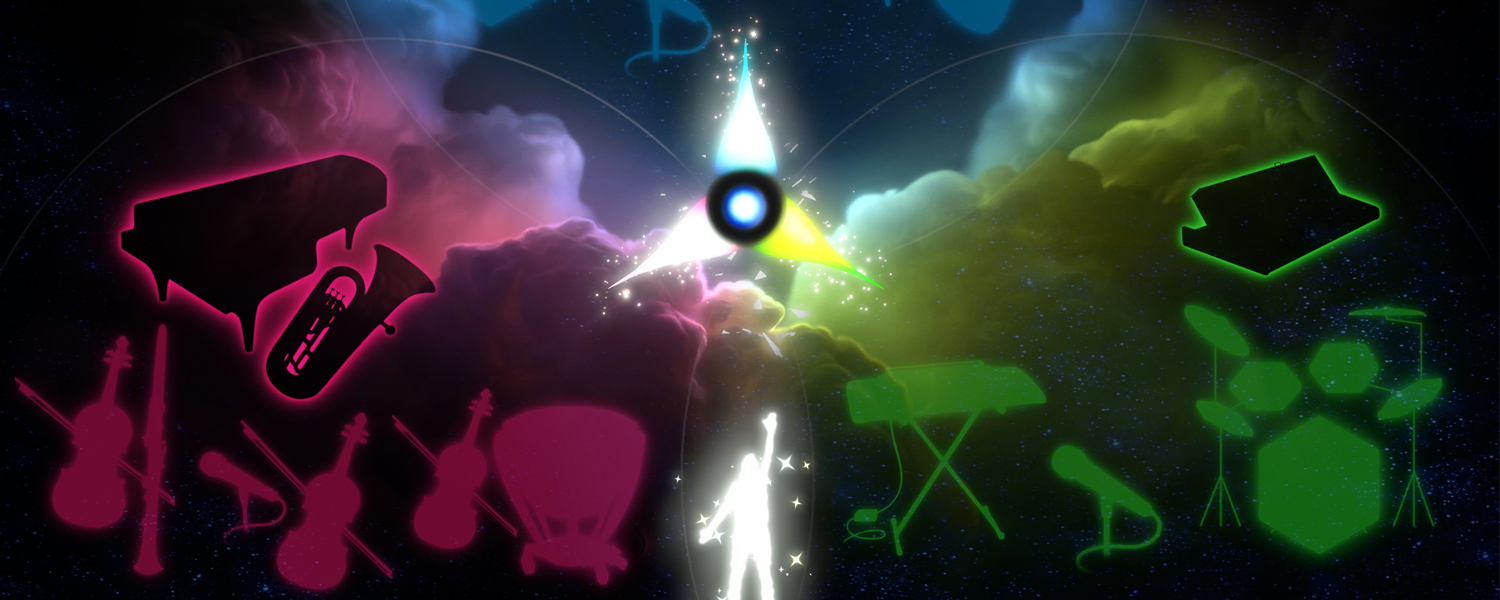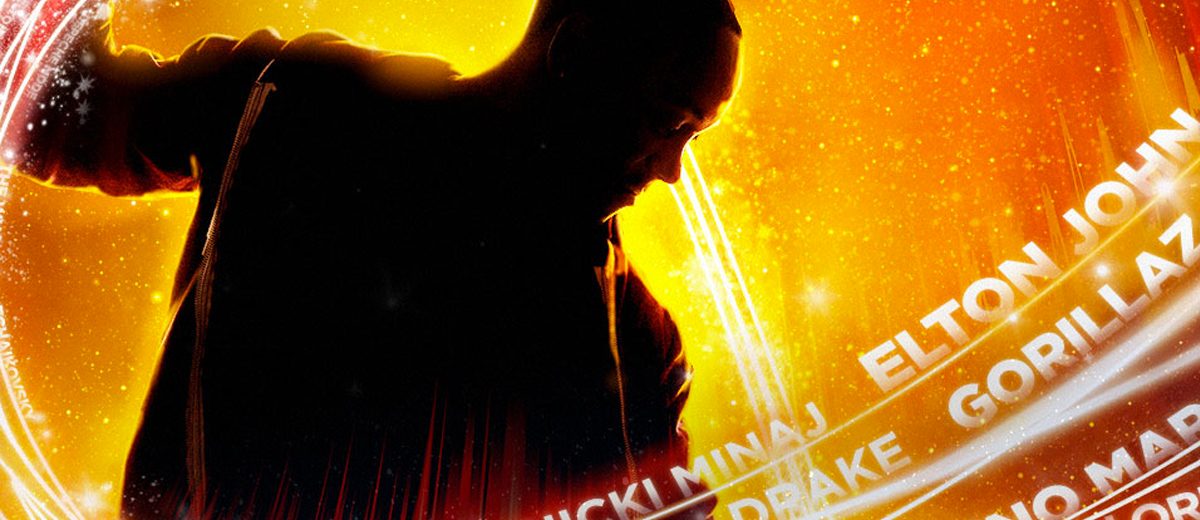
 The story of Fantasia is directly inspired by The Sorcerer’s Apprentice segment of the 1940 animated film of the same name. Some interminable amount of time has passed since everyone’s favorite mouse brought his first broom to life, and now the sorcerer Yen Sid is training his newest apprentice, you. As his apprentice, you are tasked with bringing color and life to the various regions of the world using the magical power of music. Your training goes well until you encounter Scout; a failed student of Yen Sid’s who left his apprenticeship in search of fame. Shortly after meeting her, a darkness known only as the Noise begins to engulf the world and drown out its musical harmony. What follows is your quest to help Scout fight back this darkness and restore balance to the world.
The story of Fantasia is directly inspired by The Sorcerer’s Apprentice segment of the 1940 animated film of the same name. Some interminable amount of time has passed since everyone’s favorite mouse brought his first broom to life, and now the sorcerer Yen Sid is training his newest apprentice, you. As his apprentice, you are tasked with bringing color and life to the various regions of the world using the magical power of music. Your training goes well until you encounter Scout; a failed student of Yen Sid’s who left his apprenticeship in search of fame. Shortly after meeting her, a darkness known only as the Noise begins to engulf the world and drown out its musical harmony. What follows is your quest to help Scout fight back this darkness and restore balance to the world.

All told, the story in Fantasia is entirely serviceable, if a bit short. It’s unobtrusive and serves as a good introduction to the game’s mechanics. I do have a word of warning to players who want to jump right into song quick play: certain tracks are locked behind story progression. I understand some gamers aren’t fond of this practice, but “suffering” through the campaign – if it can even be called that – is entirely painless. Those gamers can also enable Party Mode to make all tracks available right from the start, although I believe this disables some achievements.
 Fantasia’s story mode is divided up into various realms/stages that have their own unique theme (underwater, forest, city, space, etc.). They’re all colorfully lit and have various elements that will behave like musical instruments when hovered over, and many of them can be interacted with to reveal hidden secrets. These locales serve as interesting backdrops for their respective songs – there are typically 3 to a realm – but some odd performance issues drag them down. Namely, there appears to be some slight slow-down in areas such as the undersea coral reef Shoal. It isn’t exactly game breaking, but an issue like that is disappointing to see all the same.
Fantasia’s story mode is divided up into various realms/stages that have their own unique theme (underwater, forest, city, space, etc.). They’re all colorfully lit and have various elements that will behave like musical instruments when hovered over, and many of them can be interacted with to reveal hidden secrets. These locales serve as interesting backdrops for their respective songs – there are typically 3 to a realm – but some odd performance issues drag them down. Namely, there appears to be some slight slow-down in areas such as the undersea coral reef Shoal. It isn’t exactly game breaking, but an issue like that is disappointing to see all the same.

Thankfully, there are no such instances of slow-down during a song performance. Here you are treated to an explosion of colour and sound that is par for the course for a Harmonix game. Audio is crisp and the various mixes, which we will get to shortly, sound as they should. This is Harmonix quality through and through.
 Like Dance Central before it, Fantasia: Music Evolved is a motion controlled music rhythm game. You won’t be performing any expertly choreographed dance moves here, however. No, Fantasia instead seeks to replicate what it might be like to conduct a symphony orchestra. Musical cues in the form of arrows, circles, and paths will flash onscreen and it’s up to the player to match these cues with their appropriate gestures – arrows are swiped, circles are punched, paths are traced, et cetera. These simple gestures make for an immediately accessible game that anyone can enjoy, in part due to the fact that any single cue can be hit with either arm (cues that appear in pairs must obviously be hit with both). This quickly encourages more graceful movements from players who might otherwise be tempted to play a bit more robotically, i.e., only hitting cues that appear on the right hand side of the screen with their right arm and left-handed cues with their left.
Like Dance Central before it, Fantasia: Music Evolved is a motion controlled music rhythm game. You won’t be performing any expertly choreographed dance moves here, however. No, Fantasia instead seeks to replicate what it might be like to conduct a symphony orchestra. Musical cues in the form of arrows, circles, and paths will flash onscreen and it’s up to the player to match these cues with their appropriate gestures – arrows are swiped, circles are punched, paths are traced, et cetera. These simple gestures make for an immediately accessible game that anyone can enjoy, in part due to the fact that any single cue can be hit with either arm (cues that appear in pairs must obviously be hit with both). This quickly encourages more graceful movements from players who might otherwise be tempted to play a bit more robotically, i.e., only hitting cues that appear on the right hand side of the screen with their right arm and left-handed cues with their left.
But Fantasia is not just about following these cues all the time: at predetermined points in each song you can choose to remix the soundstage with one of three mixes (including the original). Have you ever wanted to hear what Tchaikovsky’s “Nutcracker Medley” would sound like played entirely with synths? I know I haven’t. But you know what? It actually doesn’t sound that bad. Now, not every mix in the game is a hit – and this will of course vary greatly depending on your musical tastes – but the sheer variety of mixes available and the multitude of ways you can sequence them keeps each song from becoming stale.

Also available are short, mid-performance minigames that allow you to create little melodies to be used as personalised additions to a track. These minigames – musical toys, really – are a bit of a mixed bag. On one hand, you can make some pretty neat musical lines that fit well with the overall beats. One the other hand, more than a few of these toys are frustrating to control with any amount of high precision, so it’s difficult to get exactly what you want.
This leads us to the burning question on everyone’s mind, “Does the Kinect work?” And the answer to that is unequivocally yes. Cues rarely, if ever, fail to register a correct hit and navigating the menus is an exercise in simplicity. Harmonix continue to be one of the best content creators for the Xbox Kinect and it really shows.



